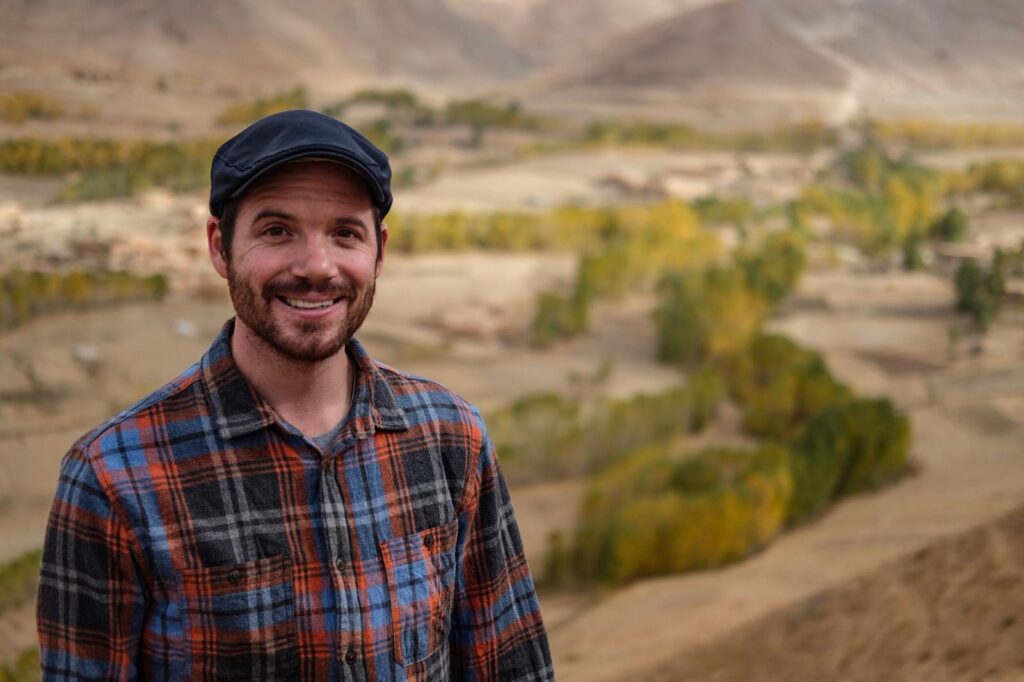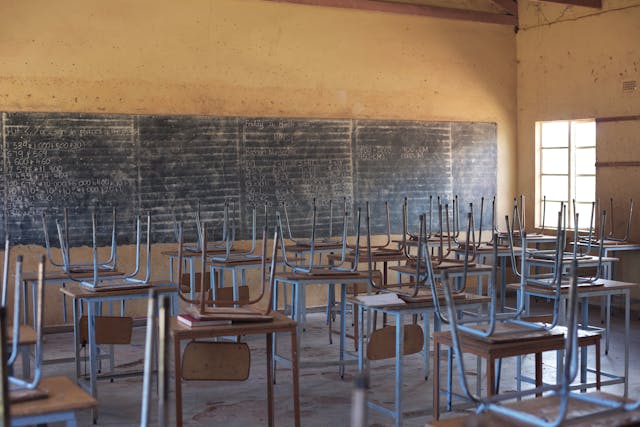Breaking Down Barriers and Transforming Access to Education
How Local Solutions Can Solve Global Education Challenges
By Terrill Kucera, WI-HER Program Manager

In 2018, I visited Garmaab Olya, a remote village nearly 10,000 feet high in Afghanistan’s mountains, accessible only after a 15-hour drive on unpaved roads from the country’s capital, Kabul. With no shops, electricity, and barely any phone service, daily life in the village was already a challenge. But for school-aged children, the closest government school was a two-hour walk away, either through dangerous mountain passes home to wolves and wild dogs or along an unpaved road where accidents and robbery were common. Amidst these challenges, attending school was nearly impossible. Recognizing the need for local educational access, the community, in partnership with an international organization, launched a project and established the village’s first community-based school. Children, who otherwise would have been left out and behind, were starting to learn to read and write within their own community.
This experience highlights a broader global challenge: over 250 million children remain out of school, with the most significant barriers felt by girls and boys in low-income and conflict-affected regions, according to UNESCO. Education is not merely a pathway to knowledge—it is a fundamental driver of social and economic development, playing a key role in reducing poverty and hunger and serving as a vital tool for improving health outcomes. Yet, despite its critical importance, access to education remains uneven, with marginalized communities continuing to suffer the most severe setbacks.
The Global Education Crisis: A Reality Impacted by Gender
Globally, an estimated 122 million girls and 132 million boys remain out of school. While progress has been made—more than two-thirds of countries have achieved gender parity in enrollment, and girls are being educated at higher levels today than ever before—the picture is far more complex in low-income and conflict-affected contexts, where 86 million girls and a significant number of boys face compounded barriers to education.
In these regions, only 78% of girls are enrolled in primary school, and a mere 31% make it to secondary school, according to World Bank data. Completion rates also reveal deep disparities: 63% of girls and 67% of boys complete primary school. The gap widens at the secondary level, where only 38% of girls complete lower secondary school, compared to 43% of boys. Upper secondary completion rates are similarly troubling, with just 21% of young women finishing compared to 26% of young men (see Girls’ Education Overview from the World Bank).
Boys are also facing a crisis in education, though their struggles often go overlooked in discussions about gender and education. UNESCO’s global report on boys and education shares how boys increasingly disengage from school. In many regions, they are more likely to drop out of school due to pressures such as child labor, economic survival, and societal expectations. This disengagement is particularly acute in Latin America, the Caribbean, and sub-Saharan Africa, where boys face increased risks of falling behind, with long-term social and economic consequences that affect entire communities.
Gender Equity, Youth and Social Inclusion (GYSI) in Education
The link between Gender Equity, Youth, and Social Inclusion (GYSI) and education is evident. Global efforts, as outlined in the Sustainable Development Goals (SDGs) – specifically, Goal 4, to ensure inclusive and equitable quality education, and Goal 5, to achieve gender equality for all women and girls – are focused on addressing disparities in school access and completion. Moreover, the U.S. government’s recent strategy on International Basic Education highlights the urgency of closing the gaps on global learning poverty while emphasizing the critical role of GYSI in expanding educational access. Development practitioners agree that literacy is a foundational skill – serving as an entry point to encourage learning – and that without it, children are severely limited in their ability to progress through school and gain the skills necessary for economic and social development.
However, these efforts are not enough.
Addressing GYSI needs in global education requires a deep understanding of the various challenges faced by diverse groups. Effective solutions must be grounded in local realities and tailored to the specific challenges experienced by unique groups. Some of the key barriers to education are related to:
- Poverty: Children living in conditions of economic fragility, political instability, conflict, or natural disaster are at a higher risk of being excluded from educational opportunities.
- Child labor, trafficking, neglect, and exploitation: Boys and girls in low-income regions are often forced to leave school to work and contribute to household income, limiting their access to education.
- Gender-based violence (GBV): GBV disproportionately affects girls both in and out of school, hindering their ability to attend and complete their education.
- Norms and expectations: Social and cultural norms often limit girls’ education, which can lead to early marriage, while boys may be pressured into labor, affecting their participation in formal education.
- Lack of training and support: Inadequate teacher training, ineffective education materials, and poor infrastructure further complicate the learning process for many students.
- The digital divide: A majority of the world’s school-aged children do not have an internet connection at home, which exacerbates educational inequities and limits remote learning opportunities.

In Afghanistan, the impact of these barriers was especially pronounced, and addressing them required holistic strategies that were culturally responsive and community-driven. In Garmaab Olya and other rural areas, we used a Community-Based Education (CBE) approach and framework that integrated GYSI principles. We gained valuable insights into what works in such contexts, including:
- School improvement projects, prioritizing the construction of Water, Sanitation, and Hygiene (WASH) facilities to ensure that women and girls had private, safe spaces at school;
- Addressing the shortage of female teachers by initiating programs to credential women across the country, enabling them to become formal teachers;
- Community involvement by engaging local Shuras (community councils) and religious leaders in discussions about the importance of children’s education, including girls;
- Integrating social-emotional learning into the curriculum and establishing peer groups for adolescent girls to learn life skills; and,
- Offering accelerated learning programs for girls who had aged out of school but still wanted the opportunity to continue their education.
WI-HER’s iDARE Methodology: A Potential Transformative Tool for Education
During my time at WI-HER, I have seen the transformative potential of the iDARE methodology in addressing GYSI challenges across various sectors. This participatory approach, rooted in improvement science and human-centered design, enables communities to conduct root cause analyses, identify and validate their challenges, design and test solutions, and achieve sustainable, contextually appropriate outcomes using a community influencer model. While iDARE has proven successful in other sectors, I see its potential to be equally impactful in the education sector.
Looking back on my time in Afghanistan, given the continued challenges faced by girls and boys, I realize how a methodology like iDARE could have helped us delve even deeper into the root causes of educational barriers and prioritize locally-led solutions. The challenges we faced – from a lack of female teachers to the need for safe learning spaces – were complex and iDARE’s structured approach would have allowed us to further engage local stakeholders at all levels to identify their most pressing needs, co-create effective solutions, and take ownership over those solutions. From my time in Afghanistan, I remember the resilience and potential of the children, parents, and community members I met. Despite their obstacles, they were eager to learn and determined to build a better future for themselves and their communities. This was not just about providing a school—rather, it was about creating environments where all children could thrive.
Integrating GYSI in the education sector is not just a moral imperative—it’s a necessity for achieving global development goals. As we work to ensure that every child, regardless of gender, has the opportunity to learn and succeed, we must continue pushing for policies, programs, and holistic strategies that address the unique challenges faced by marginalized groups. By doing so, we can unlock the full potential of education as a tool for social transformation.